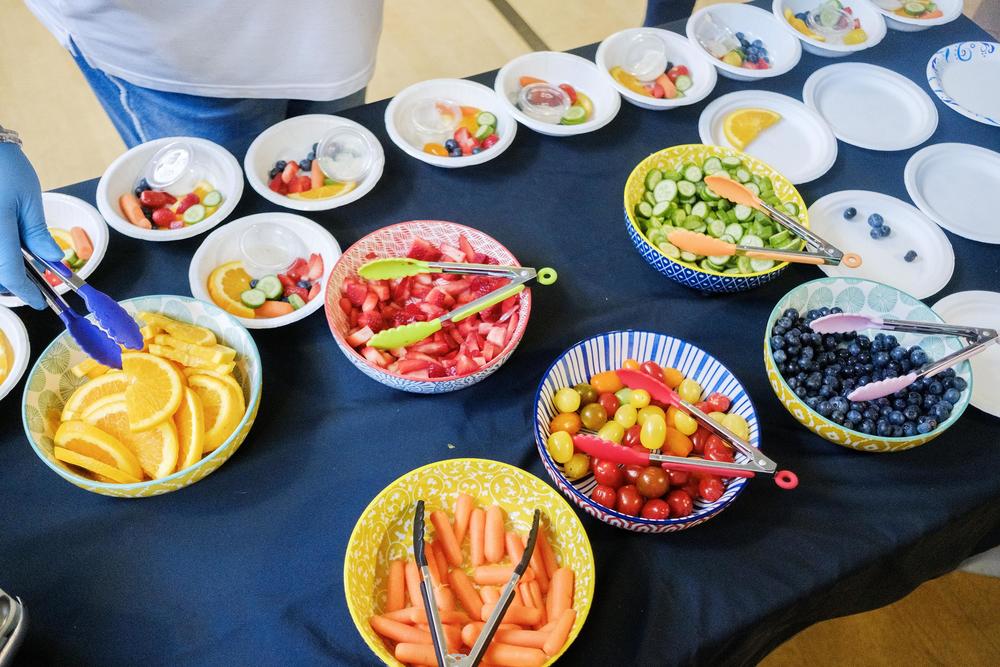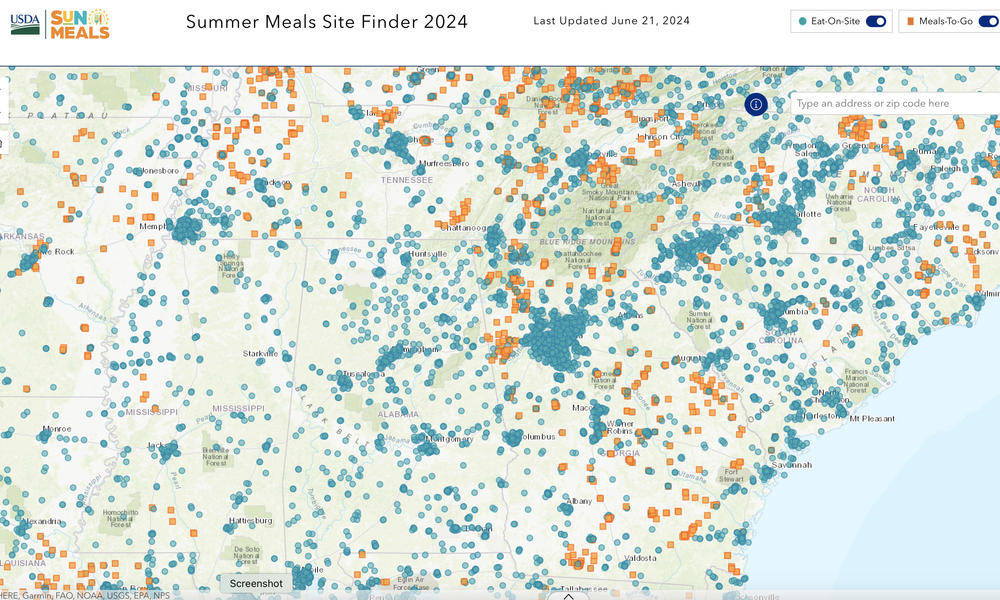
Caption
Fruits and vegetables, many of them Georgia grown, on offer at the Happy Helpings site at the Boys and Girls Club on Anthony Road in Macon.
Credit: Grant Blankenship/GPB News
A program of the US Department of Agriculture aimed at stemming child hunger during the summer school break has officially begun in Georgia.
The program called Happy Helpings serves meals at parks, recreation centers and places like Buck Melton Boys and Girls Club in Macon, where the program had a formal Summer 2024 kickoff.

Fruits and vegetables, many of them Georgia grown, on offer at the Happy Helpings site at the Boys and Girls Club on Anthony Road in Macon.
Shavana Howard, senior advisor for food, nutrition and consumer services with the USDA said the program, nationally known as SUN Meals, has its roots in the COVID pandemic.
“The pandemic, we definitely learned that kids needed options for healthy meals to continue throughout the school year,” Howard said. “And so, under the leadership of the president and, in a bipartisan fashion, Congress came together and created the summer meals programs.”
Tamika Boone of Georgia’s Department of Early Care and Learning administers Happy Helpings. She said the conditions that first inspired the program persist in Georgia.
“The child food insecurity rate has been relatively consistent post COVID,” Boone said “So we're still at about 16% for a child food insecurity rate. So that has not changed significantly.”
In addition to onsite meals, Happy Helpings offers so-called grab and go meals at a number of rural sites.

CLICK THE MAP: Find the Summer meal site near you.
“We are seeing more meals being served. We're seeing more areas picking up and serving meals. And so we're, we're chipping away at that child food insecurity, one program, one meal at a time,” Boone said.
But Georgia is also one of a dozen states which opted not to enroll in what USDA called the SUN Bucks program. That’s a $120, summer-only benefit to use at grocers. The states would have provided half of that benefit.